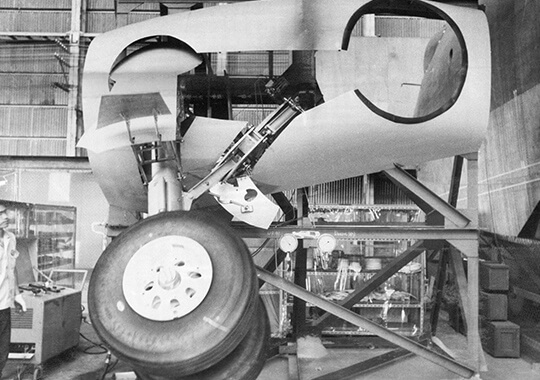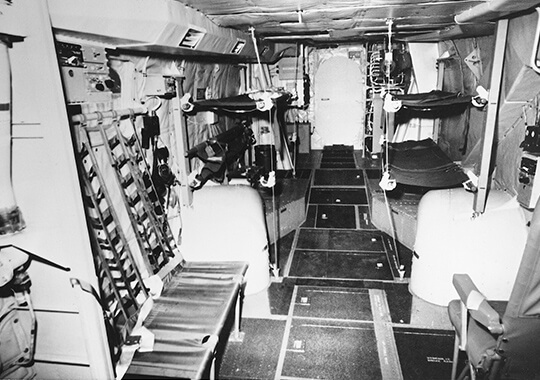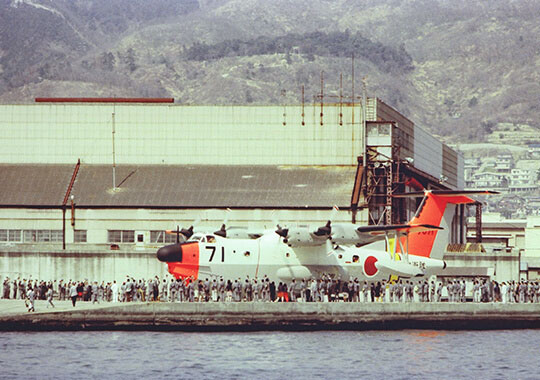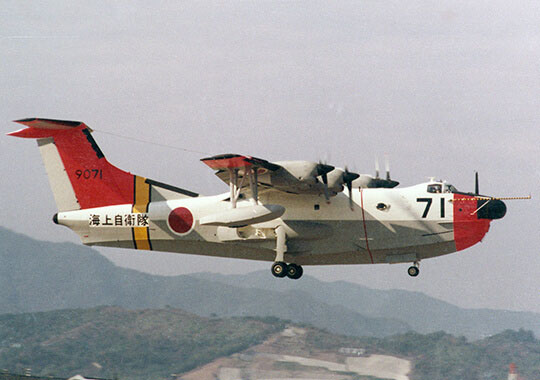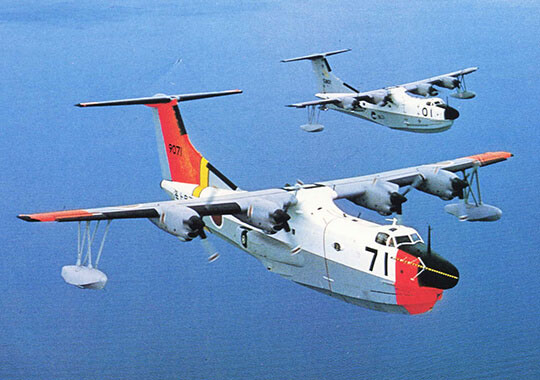Development Story 4
US-1 / US-1A: Amphibian Aircraft (Developed under the designation PS-1 Kai)
The PS-1 became our long-awaited mass-produced amphibian aircraft, but one drawback of the PS-1 as an anti-submarine patrol plane was that it was unable to use sonar (underwater sound wave detector) before it landed on water. However, because sonar's performance had not been improved as we had originally expected and technological developments made it possible to install radar in aircraft, amphibians were no longer needed for use as anti-submarine patrol planes, and this duty was assigned to P-3C. Then in September 1980, we received an official notice from the Defense Agency to discontinue orders for aircraft that would succeed the PS-1.
Before production of the PS-1 was discontinued, we hit upon the idea of developing amphibians dedicated to rescue operations and moved forward with the plan. In March 1973, we received an order from the Defense Agency for the first amphibian model, which would be developed by making improvements to the PS-1, thus narrowly securing our opportunity to manufacture amphibian aircraft.
The most important part of this development project was to attach “legs” to the aircraft, since it would have to be able to land on the ground for ambulance transportation. We had tried literally dozens of ideas for the shape of the landing gear and where to attach it, and conducted demonstrations over and over again until we decided to create a bulge outside of the body of the aircraft and store the gear inside it.
With the success of a maiden flight in October 1974, the development of amphibians capable of taking off and landing both at sea and on the ground had been completed, and the first model of the US-1 STOL Search and Rescue Amphibian was delivered to the Defense Agency in March 1975. On the day of delivery, people from the Agency and the Company waved farewell to the aircraft from the Konan Plant's south apron. As if in response to their waves, the captain flew low above the apron by lowering the “legs,” the signature of the US-1 and also the fruit of our hard labor, before leaving for the Iwakuni Air Base.
This first amphibian in Japan was charged with the mission of rushing to the site of maritime accidents before ships, searching for and finding the victims and then engaging in rescue operations after landing on the water. Following the completion of the US-1, the JMSDF formed the rescue amphibian unit Air Rescue Squadron 71 in July 1976. The US-1 received its first order to go into action on July 12 of the same year, charged with the duty of rescuing the wounded crew of a Greek ship on the Pacific Ocean off the Boso Peninsula.
With the output of its engine boosted in 1981 from the US-1 No. 7, the US-1 was renamed as the US-1A STOL Search and Rescue Amphibian. With subsequent additional improvements, a total of 20 models were delivered to the Defense Agency by 2004.
